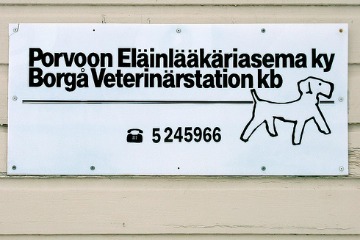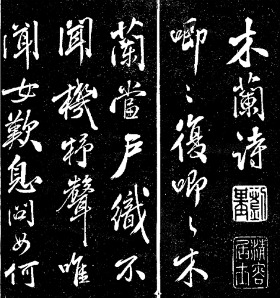9 of the Hardest Languages for English Speakers to Learn

Photo: Mark Heard
While the easiest languages for English speakers to learn have some syntactic common ground with English, the toughest ones are quite alien. Learners tackle writing systems, tonality, and grammatical systems so different, they can make an English-speaking head spin.
If youre studying or have mastered one of these nine languages, Matador salutes youand we want to learn your secrets.
1. Arabic
Arabic breaks down into families. One is the Modern Standard Arabic of print, media, and online content. The other is spoken Arabic, which encompasses many colloquial dialects which vary by region. This means that if you pick up conversational Arabic in Tunisia, it might still be tough to be understood in Kuwait.
For all dialects of Arabic, pronunciation is difficult for English speakers, as many consonants are formed at the back of the mouth.

Arabic, Photo: Nasir Nasrallah
Arabic script is a phonetic, 28-symbol alphabet descending from Phonecian. Most letters change shape depending on their position in the word, and letters may or may not be joined. The most basic challenge in tackling written Arabic is in reading from right to left, working against an! English speakers deeply embedded instinct.
Arabic grammar has very few parallels with English and Indo-European languages. The plural is expressed by changing the vowel structure of the word: kitab (book) becomes kutub (books). The bulk of verbs are irregular and can be formed 25 ways. Its a logical grammar system, but a complicated one too.
2. Basque
In a study conducted by the British Foreign Office, Basque was ranked as the hardest language to learn. Geographically surrounded by Romance languages, it is one of the only language isolates of Europe, with no syntactic parallels to English. The regional dialects are highly diverged, though a standardized Basque is used for media and academics.
Like many languages on this list, Basque is agglutinative, meaning that words are formed and modified with prefixes and suffixes. While law is lege in Basque, the phrase according to the law would be structured by suffixes as legearen arabera. Instead of prepositions, Basque uses cases endings to show the relationship between words, such as mendi (mountain) and mendira (to the mountain). It sounds simple, but with eleven cases, each taking four forms, the grammar is complex.
Basque is written in the Roman alphabet and pronunciation is fairly easy, even with new consonant sounds like tx or tz.
3. Cantonese
Cantonese is a tonal language, which can be hugely challenging for English speakers who are used to speaking with emphasis (I didnt eat YOUR sandwich!) and inflection, rising tones to pose a question. Cantonese can be difficult even for those fluent in other Chinese dialects because of its tonal system. While Mandarin has four tones, Cantonese has eight, with pitch and contour shaping a syllables meaning.
Chinese has a logographic (pictoral) writing system of 5000+ characters. This gives a new hurtle to language learning, since a reader of Cantonese cant sound out sy! llables in a text as we can with phonetic alphabets. They must know and recall the name of each character. It is a myth that all Chinese languages are written in the same logographic form, though Cantonese and Mandarin share many traits of their writing systems, and the Mandarin writing system is often used by Cantonese speakers.

Finnish, Photo: Martin Terber
4. Finnish
Harry Farber, the author of How to Learn any Language and a polyglot many times over, says that Finnish is one of the hardest languages for him to learn.
Finnish is in the Finno-Ugric language family, with Estonian and Hungarian. Without Germanic or Latin influence, Finnish vocabulary is completely alien to English speakers. Its grammar is also somewhat notorious. There are fifteen noun cases, sometimes with subtle differences. Talotta means without a house, while talolta means from a house. Tricky.
There are six verb types, classed by their stems. These stems alter as the verbs are conjugated. The language is agglutinative and verbs are conjugated with a succession of suffixes.
The good news? Finnish is written as it sounds (in the Roman alphabet!), and pronunciation is comfortable for English speakers. A common speaking problem lies in remembering single or double vowel sounds, as in tuli (fire) and tuuli (wind).
5. Hungarian
Though it uses the Roman alphabet for writing, dont think that reading Hungarian will be a snap. Unique vowel sounds (,,,,,,,,) and consonant clusters (ty, gy, ny, sz, zs, dzs, dz, ly, cs) make it difficult for English tongues to read and pronounce Hungarian.
Instead of articles, Hungarian conjugates verbs in one of two ways for definite and indefinite object! s. O lvasok knyvet means I read a book, while Olvasom a knvyet is I read the book.
Because possession, tense, and number are indicated by suffixes, not word order in a sentence, Hungarian sentence structure is very loose and flexible. Sounds forgiving for a novice speaker, huh? The truth is that any sentence can take on several meanings if the suffixes are altered slightly. Its a confusing system to learn.

Photo: Tony Oxborrow
6. Japanese
The good news about Japanese? For English speakers, pronunciation is a cinch. Japanese vowel and consonant sounds are very familiar to those fluent in English, which makes the language easy to parrot and understand.
The tough part? Written Japanese can be a headache to learn. It uses four alphabets including the Chinese-influenced kanji (pictoral), two phonetic writing systems, and the Roman alphabet (Romanji).
The notion of honorific language is challenging for learners. Japanese speech can vary with levels of politeness, with each level having set forms and rules. English has no set way of speaking honorifically or intimately, and learners may have trouble recalling when and where to use honorific speech.
Grammatically, Japanese is a mixed bag. There are only three irregular verbs and a pretty consistent structure, with verbs at the end of the sentence. Nouns carry no gender or number, though they can function as adjectives or adverbs, which can be confusing for readers.
Studying Japanese? Check out Matadors 10 Essential Tips for Learning Japanese and 10 Extraordinarily Useful Japanese Phrases for Travelers.
7. Navajo
The ! Navajo l anguage was famously used as a code by US forces in World War Two. In the Pacific battles, Japanese codebreakers cracked other allied dialects and coded language. They could never decipher Navajo.
Navajo is a verb-centred language. Even adjectives have no direct translation into Navajo; descriptions are given through verbs. Its a prefix-heavy language, with 25 kinds of pronominal prefixes which can be stacked onto one another. This forms incredibly long phrases like chid naana beeeldhtsoh bik dah naaznilg which means army tank.
Another feature unique to Navajo is animacy, wherein nouns will take on certain verbs according to their rank in the hierarchy of animation. Humans and lightning are highest, children and big animals come next, and abstractions sit at the bottom. Its a fascinating aspect of the language and culture, but a tough one to memorize and put into practice.
Though Navajo language learning materials may be hard to come by, Rosetta Stone offers a Navajo course, released in August 2010.

Photo: John Dyhouse
8. Mandarin
Written Mandarin is pictoral and contains over 20,000 characters. Some base characters, like root words, appear in other symbols, like (the character for woman forming part of sister. The written form of the language has no phonic connection to the spoken form.
Mandarin, like Cantonese, is a tonal language, and a misused inflection can change the meaning of a sentence. The syllable ma can mean mother or horse, depending on the inflection, which could lead to grave insults at the dinner table.
Grammatically, Mandarin is far simpler than Indo-European languages! . Words, for the most part, have only one grammatical form. Their function is shown through prepositions, word order and particles. Building and comprehending this syntax, however, takes time. There are some tough elements like Mandarin adverbs: a dozen words which have no direct English translation.
9. Korean
At first, the language seems far easier than other East Asian tongues. No tones! No pictoral writing system!
Its true that reading and writing in Korean is easy to master, as the language uses the very logical Hangul phonetic written system. Speaking and listening, while tone-free, can be challenging with unique sounds that are hard for English speakers to recognize, let alone master.
The biggest challenge with Korean lies in the grammar. Verbs can be conjugated hundreds of ways, depending on tense, mood, age and seniority. Like Japanese, one sentence can be said in three different ways, depending on the relationship between the speaker and addressee. Adjectives are conjugated too, with hundreds of possible endings. Also, there are also two different number systems, quite different from one another. ![]()
Community Connection
Have you studied any of these languages? What did you find most difficult? What other languages have you studied that are particularly hard for English speakers to learn?
Comments
Post a Comment